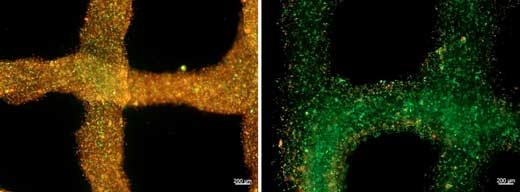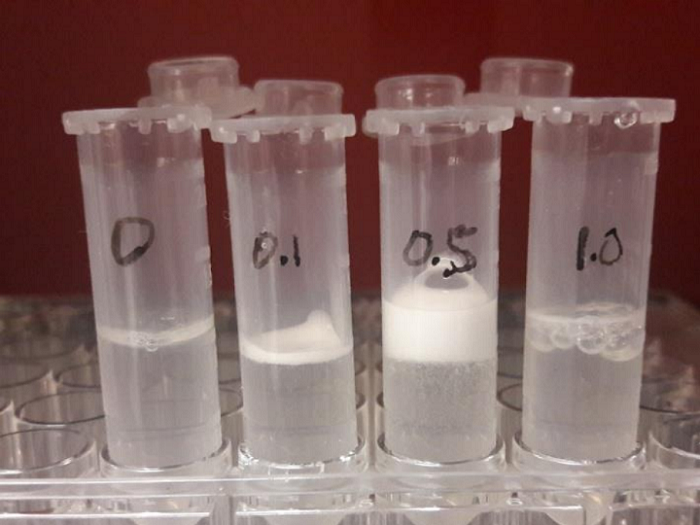China3D printingNet September 16th, tissue engineering or regeneration is the process of improving or replacing biological tissues by combining cells and other materials with optimal chemical and physiological conditions to build scaffolds on which new living tissues can be formed.We have seen many3D printingThe example is used to accomplish this task. The potential to modify new tissues in this way provides answers to the shortage of organ transplants and their applications in drug discovery.
However, to become viable tissues, these cells need oxygen delivered to them through blood vessels. In transplanted tissues, oxygen may take several days to grow.But a group of researchers is working on a solution: a bio-ink that can release oxygen, which can deliver this most important element to3D bioprintingIn the cells of the tissue. In this way, the cells can survive while waiting for blood vessels to grow.

The heart cells (L) in the bio-ink are not supported by oxygen, while (R) has the function of releasing oxygen. Live cells are stained green, and dead cells are stained red. Picture: Khademhosseini Lab)
The most recent research teams are from UCLA, Kocaeli University in Turkey, Terasaki Institute of Biomedical Innovation (TIBI) in California, Sharif University of Technology in Iran, Erciyes University in Turkey, University of Lorraine in France and University of Iowa.Published a paper about his work in Advanced Healthcare Materials, “The structure of the gelatin methacryloyl group of oxygenated cellsbiology3D printing“.
The abstract states: “The survival of cells in the early stages of transplantation and before the formation of new blood vessels isbiology3D printingThe main challenge for organizations in translation applications. Supplementing transplanted cells with oxygen (O2) through an O2 generating source such as calcium peroxide (CPO) is an attractive way to ensure cell viability. Calcium peroxide also produces calcium hydroxide, thereby reducing the viscosity of the bio-ink, which is a limiting factor for bioprinting.So adapt the solution
biology
3D printingVery important. In this research, a gelatin methacryl (GelMA) bio-ink optimized in terms of pH and viscosity was developed.Improved rheological properties have resulted in a suitable3D bioprintingAnd the strong bio-ink released by controlled O2. In addition, the O 2 release, bioprinting conditions and mechanical properties of hydrogels with different CPO concentrations were characterized. As a proof of concept study, CPO containing GelMA bioink was used to bioprint fibroblasts and cardiomyocytes. After 7 days of culture under hypoxic conditions, the viability and metabolic activity of the printing cells were checked. The results show that under hypoxic conditions, the addition of CPO can improve the metabolic activity and cell viability of the cells in the bioprinted structure. “
According to China3D printingWang understands that in order to enhance the physical and chemical properties of its oxygen-generating gelatin methacryloyl (GelMA) bio-ink, the team conducted extensive tests and found that enough oxygen was delivered to the cells to maintain the developing tissue structure , Until the blood vessel is completed. develop. Once this happens, the container can take over the delivery of oxygen. Even then, bio-inks can still help by providing additional support to enhance the growth and regeneration of more new tissues.

Dr. Samad Ahadian, the lead researcher of the TIBI team, explained: “By delivering oxygen to the implanted cells, we will be able to improve tissue function and integrate it into the host tissue. Similar methods can be used to make functional tissues have longer survival. In order to carry out drug screening and pathophysiological research over a long period of time.”
In addition, the researchers conducted experiments on tissue structures with two types of cells (including muscle cells and heart cells) and reported that the use of the new bio-ink would produce some “positive effects.”
(Editor in charge: admin)


0 Comments for “Researchers create bio-inks that can deliver oxygen to 3D printed tissue cells”